The design began with the process of understanding the culture, the climate and the people of Accra, Ghana. The design is based in a tropical climate where the temperatures and the humidity are high. This design was then set in a Metaversal city that was a culmination of 6 sites from different regions of the world. The resulting city was then carefully studied to create an urban design that met the requirements and was sensitive to all the regions and designs in question.
UNDERSTANDING GHANA:
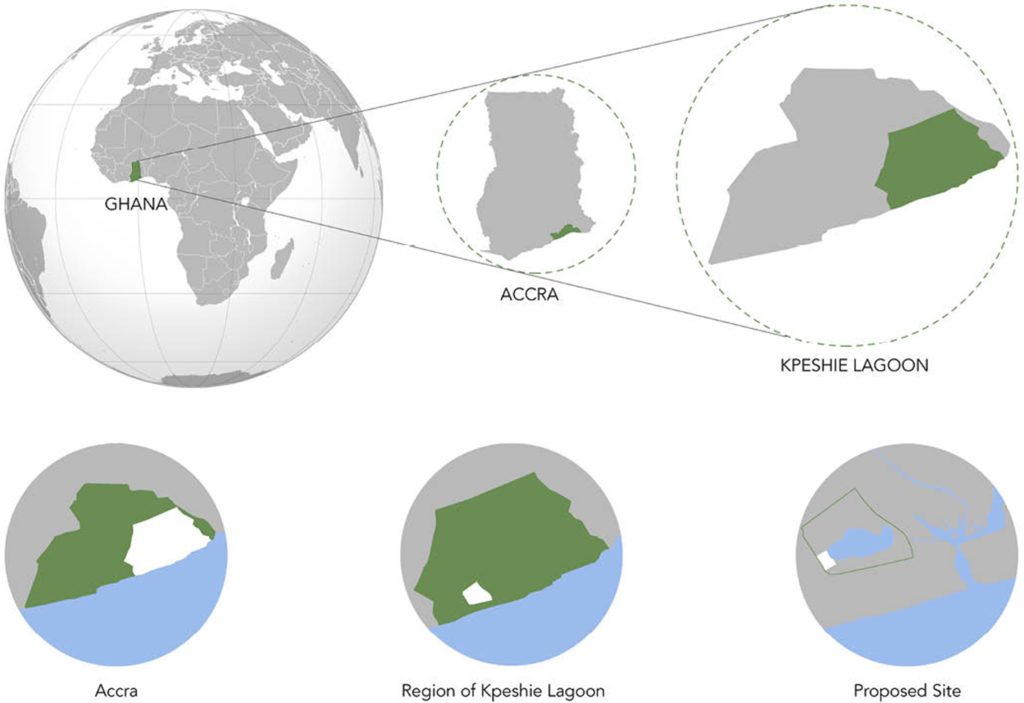
The region chosen to study is that of Kpeshie Lagoon situated in Accra, Ghana. The site is one that is in close proximity to a lagoon and the climate is such that is 2 dry seasons and 2 wet seasons. These were all factors that needed to be considered while ideating and designing.

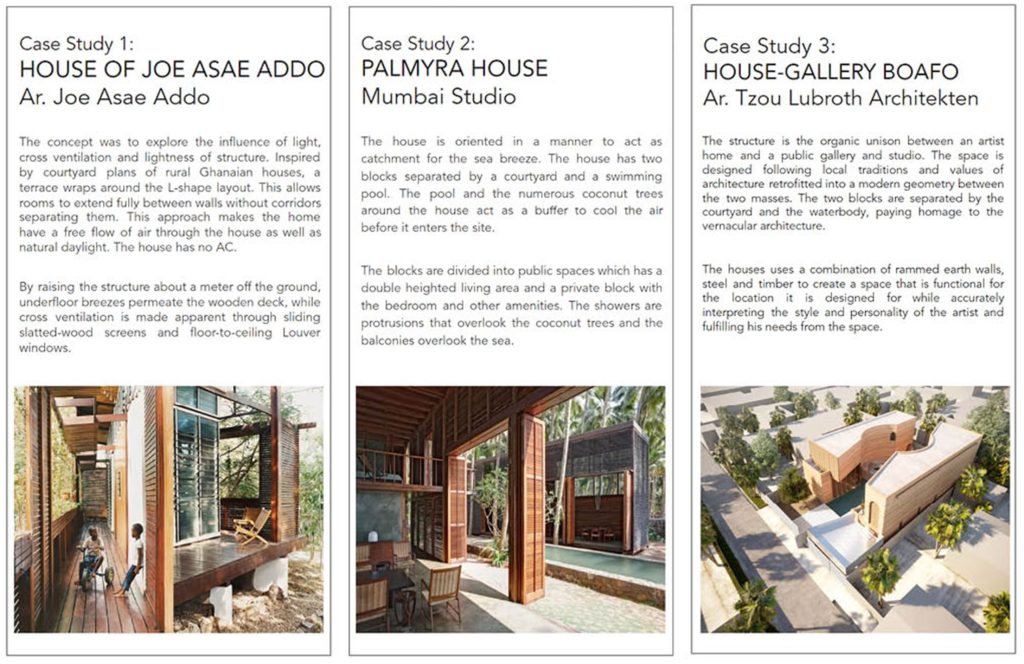
LEARNING DRAWN FROM ANALYSIS:
Having studied the region, the culture and the architecture we drew a few conclusions that then became guidelines for us to design using.

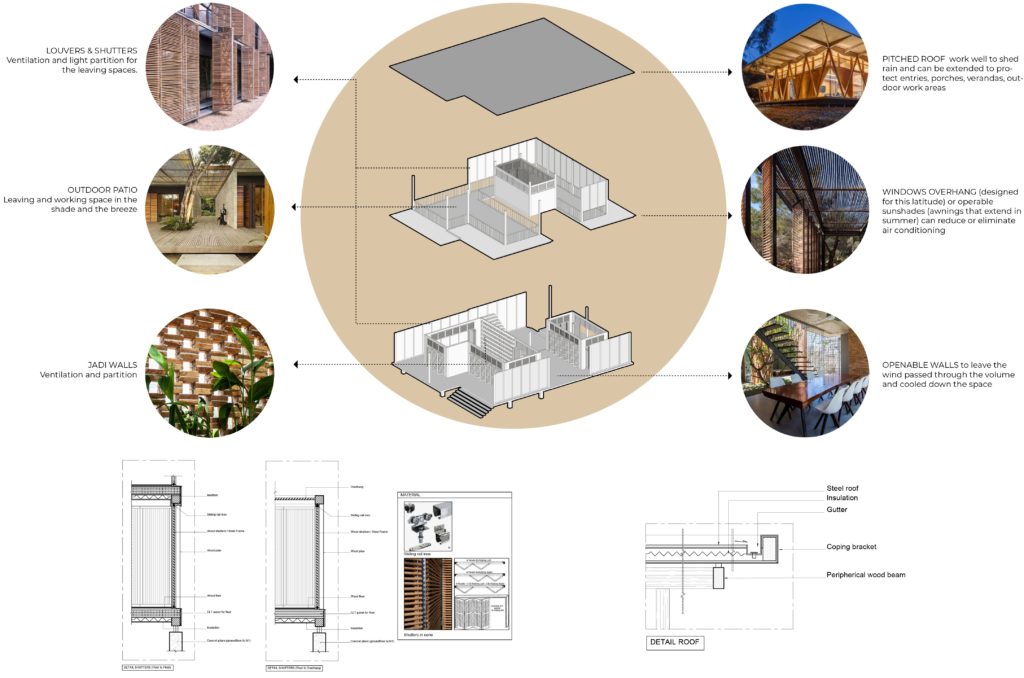
The core factors to consider were the Ventilation, Temperature Control and the Materials. The answer was to use local materials and have a large amount of the installation and construction done on site. This reduced the carbon footprint and also allowed for the material chosen to be ones that are acclimatized to the region. This also helped govern the different design choices made and hence resulted in the choice and language opted for in the construction of the structure.
TRANSVERSAL SITE ANALYSIS:
Site Area: 4000 sq.m
Floor Area Ratio: 1
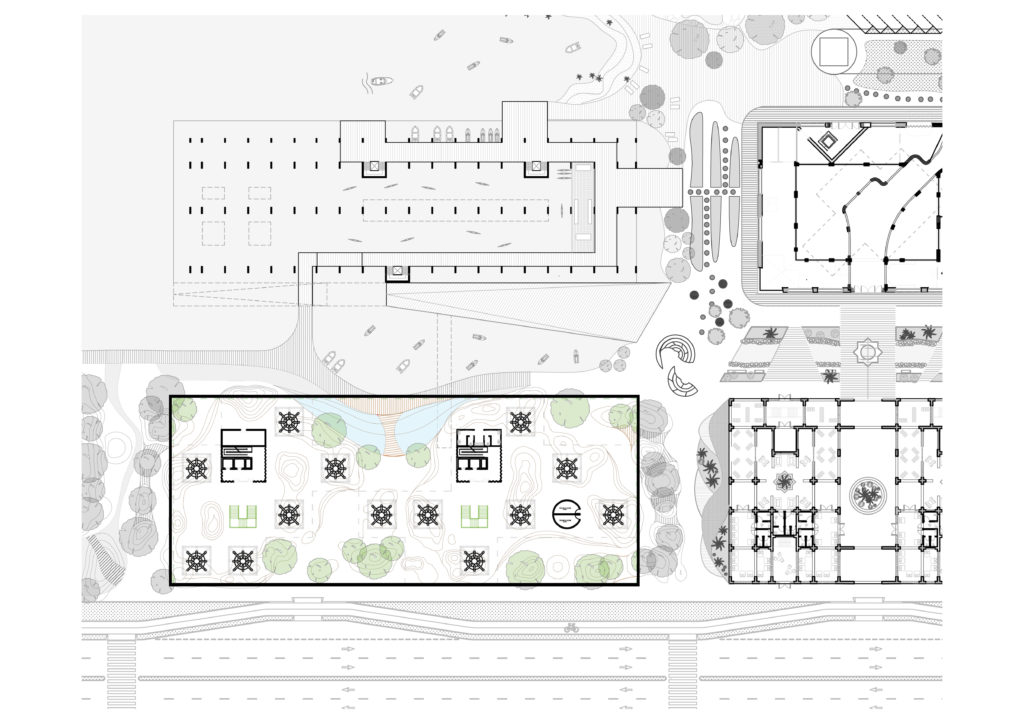
- There is vehicular main road along the South-east edge of the site. This needs to be considered for the on site movement.
- Site is surrounded by pedestrian pathways along two sides (North-east and South-west).
- There is a large water body to the North-west of the site and some of it enters into the plot boundary. The lake has several water activities which are accounted for in the design.
CONCEPT AND PROGRAM DEVELOPMENT:
The form development began with understanding each unit and how to create the right kind of ventilation and movement through the spaces. This then led to the understanding and the division of spaces.
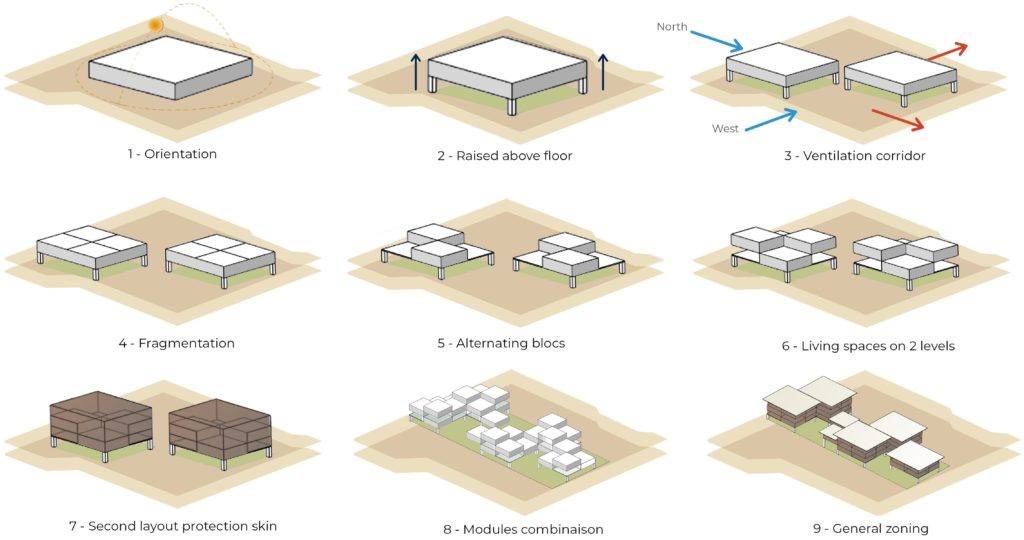
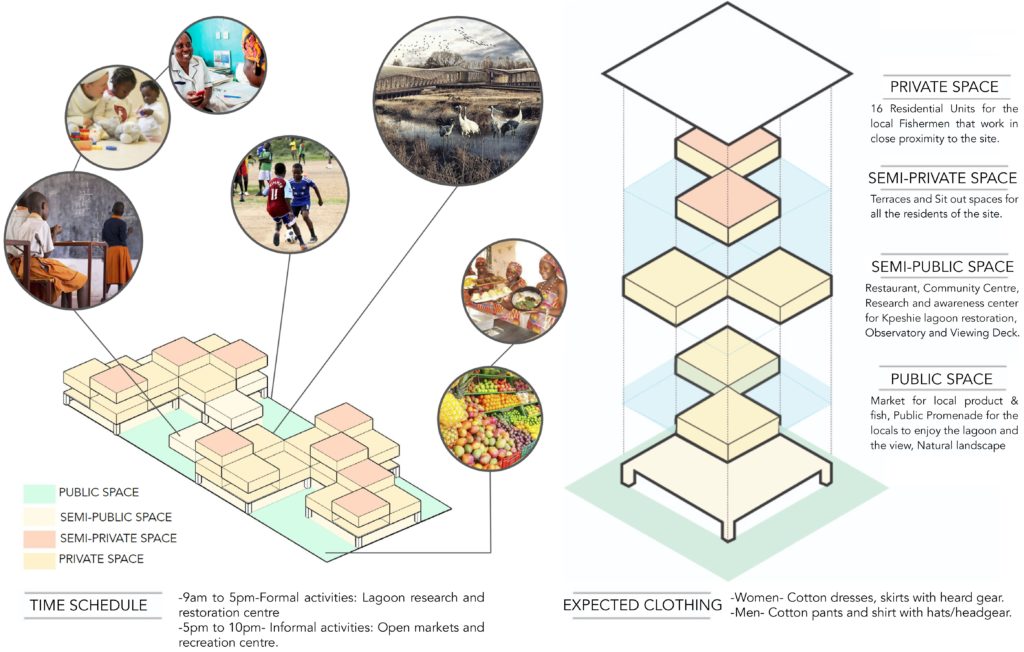
Once the form was finalised, the layers of program and interaction between the spaces and the users could be finalised. This then allowed us to calculate the areas and the functions.
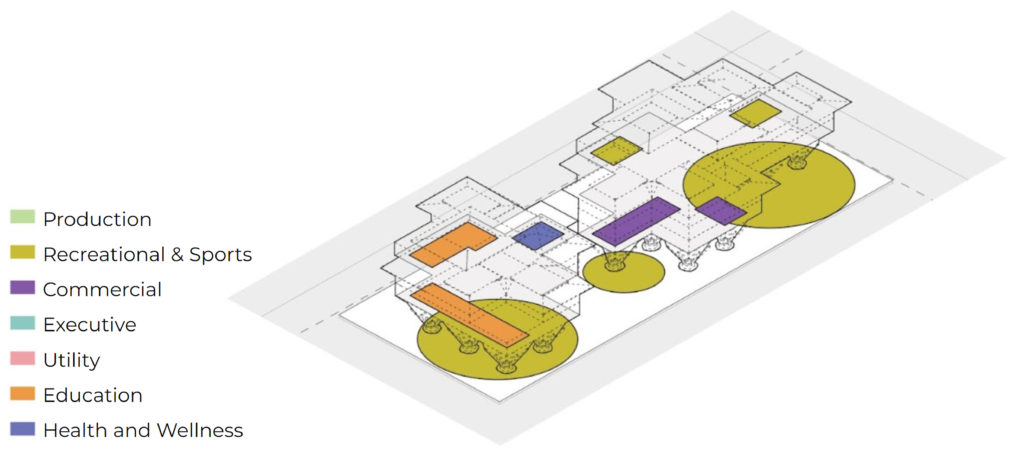
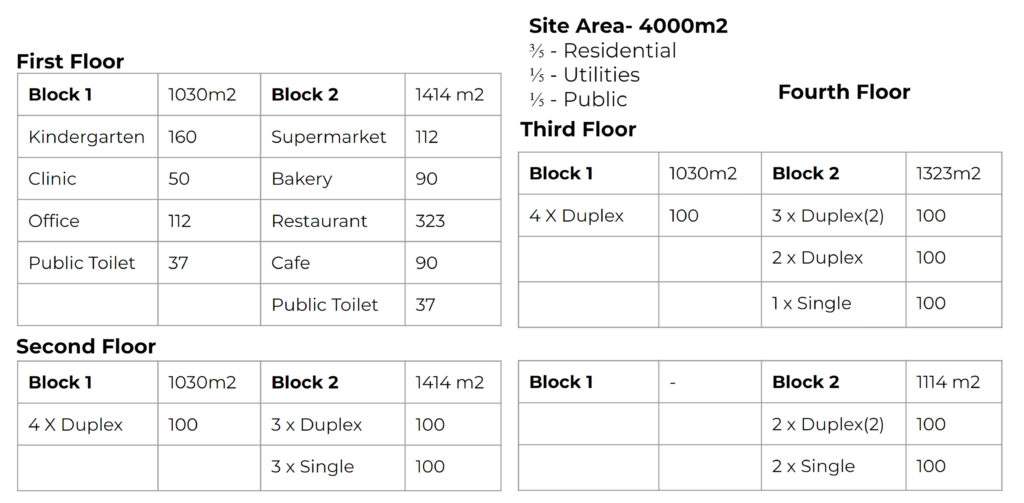
SPATIAL & PROGRAMMATIC DESIGN:
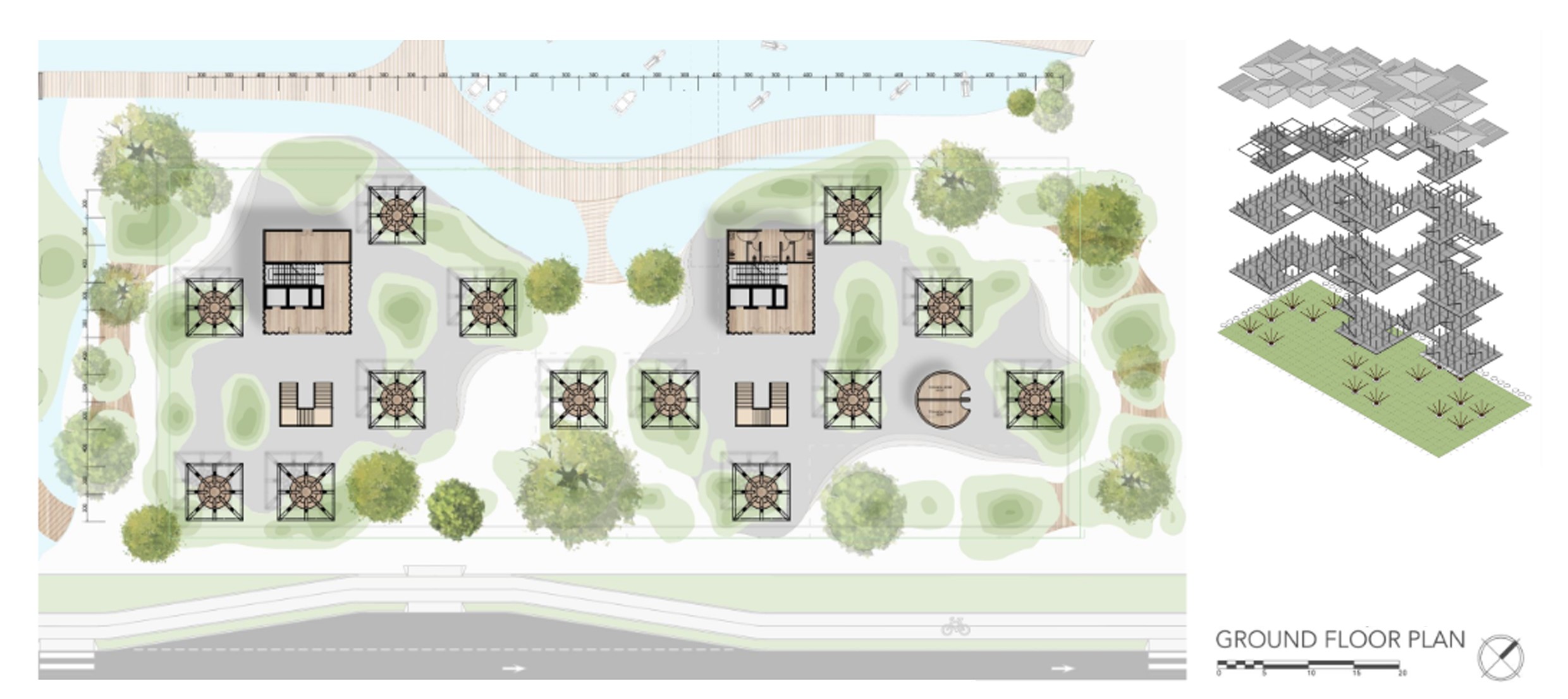
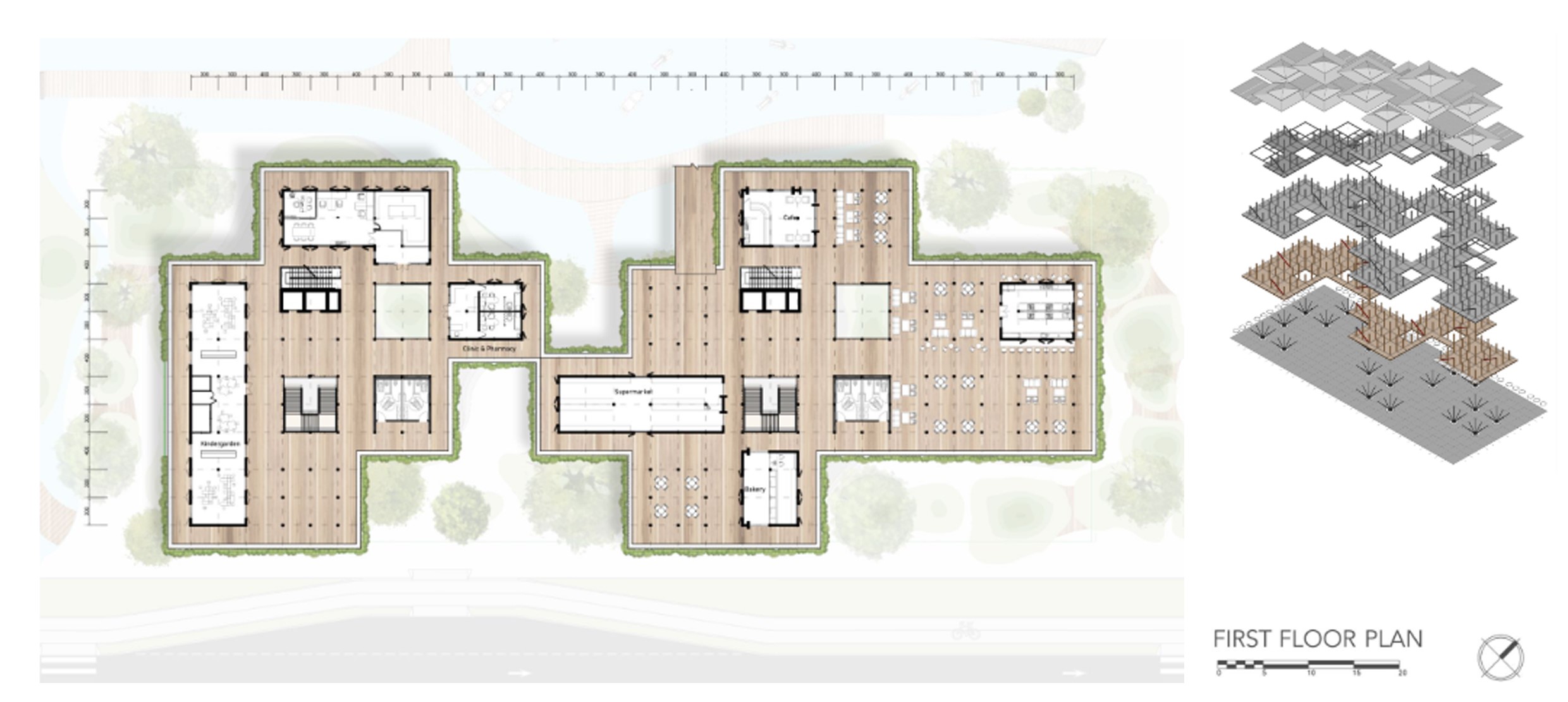
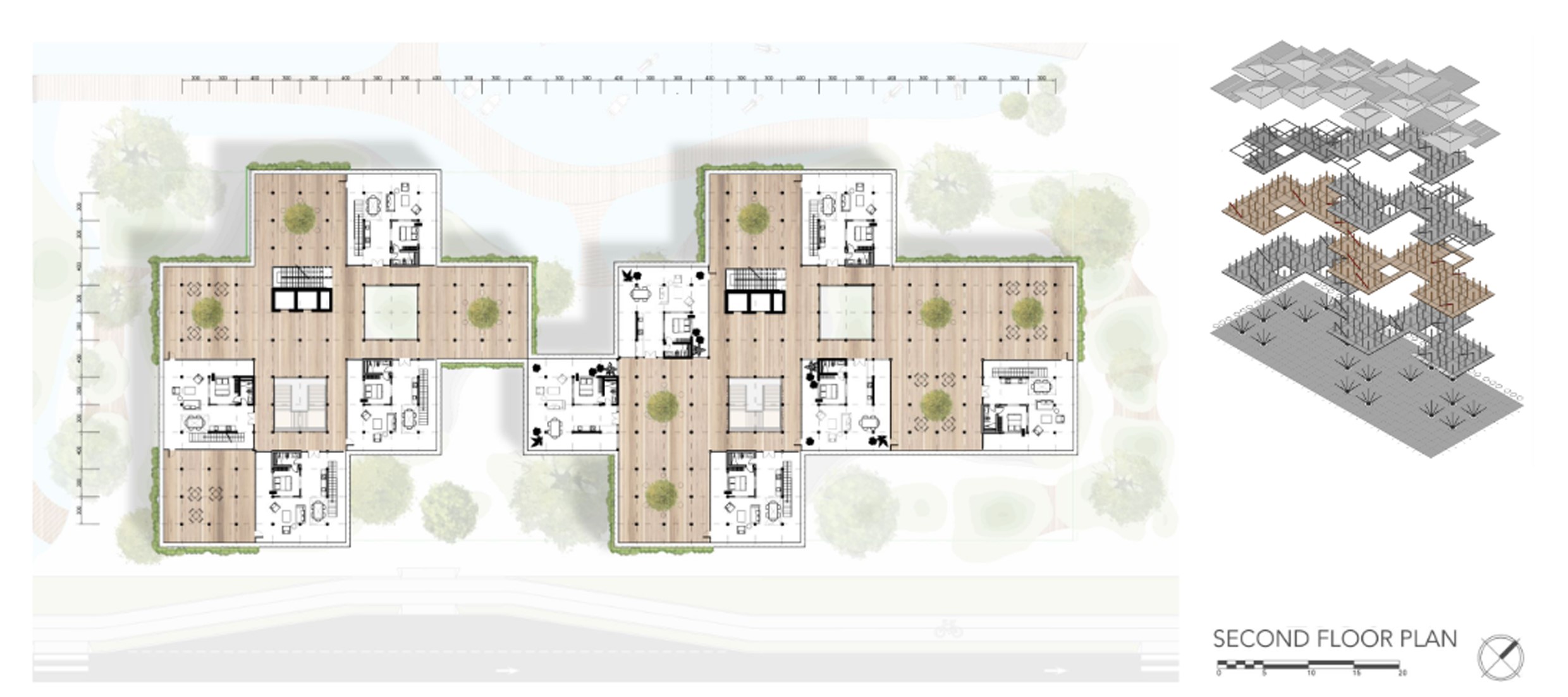
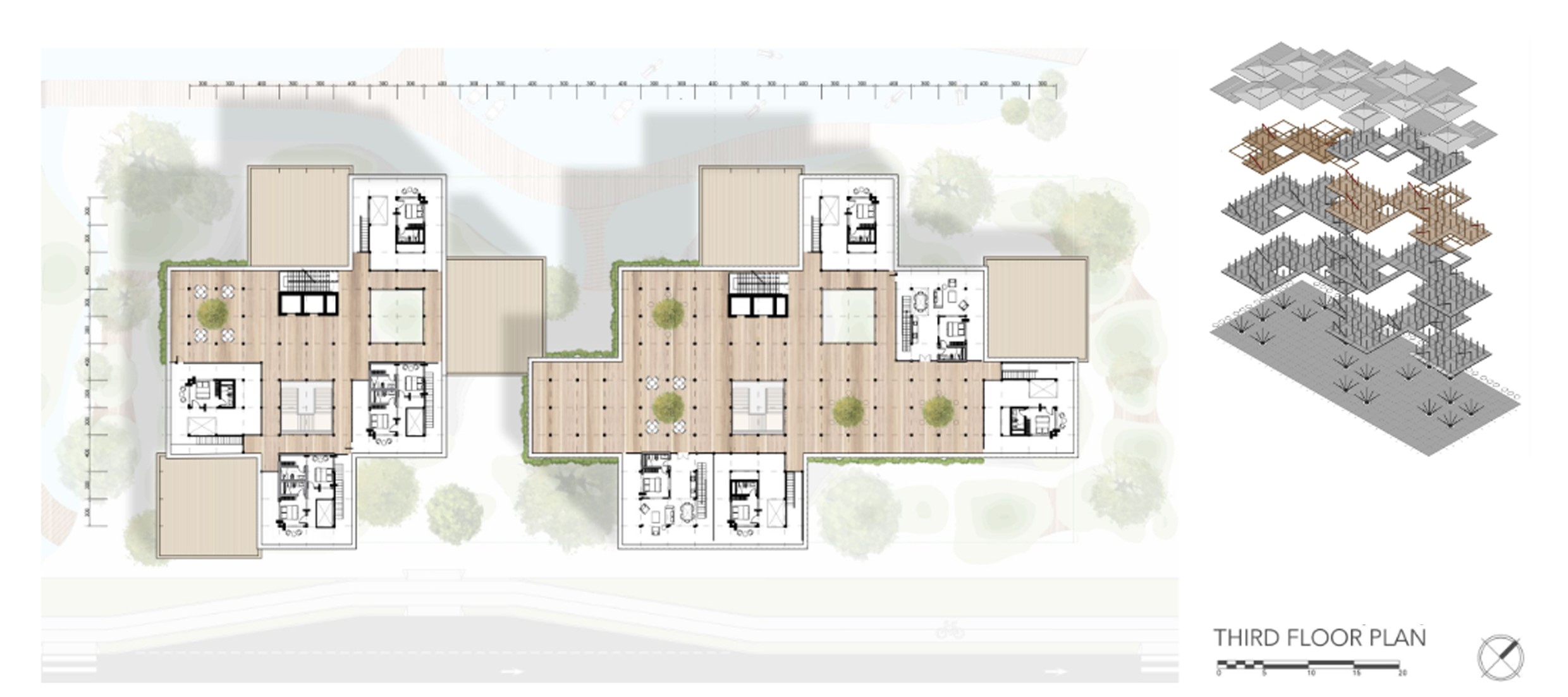
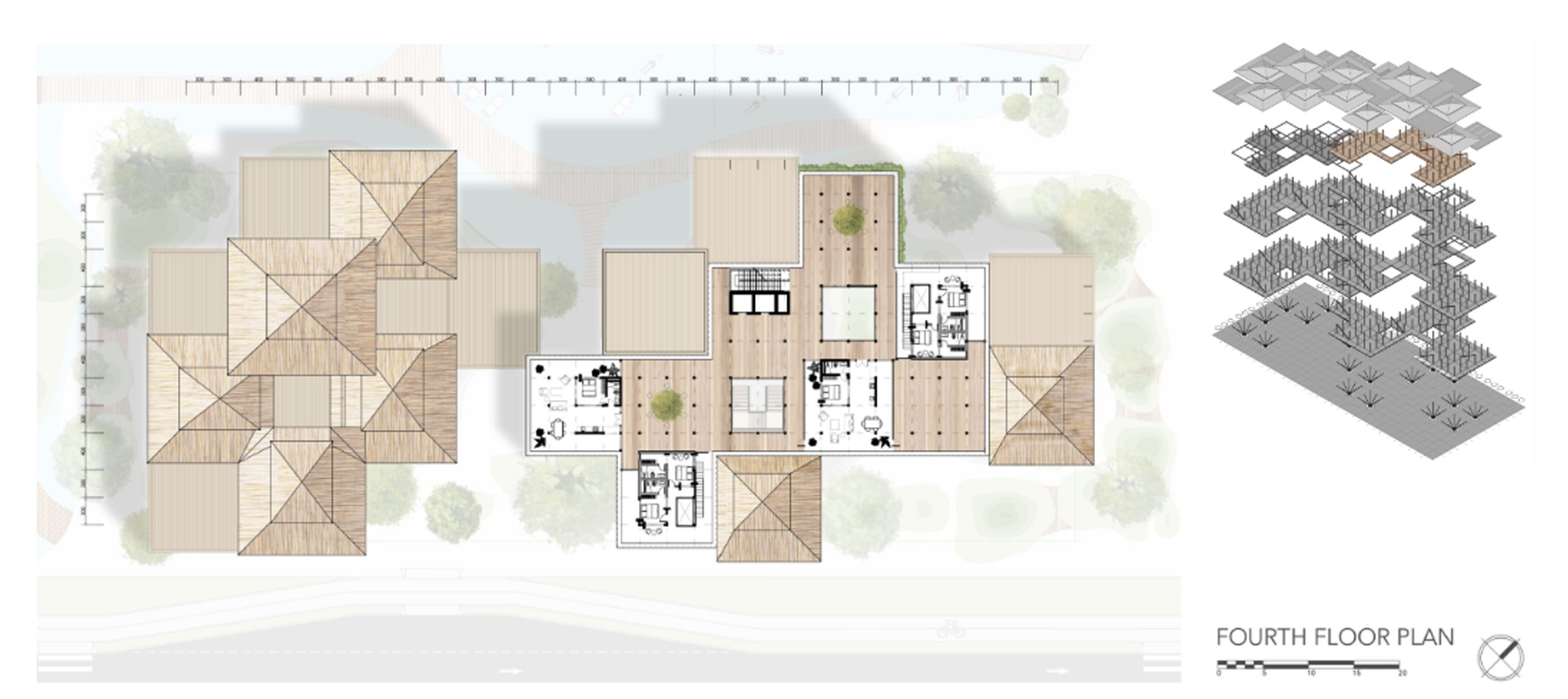
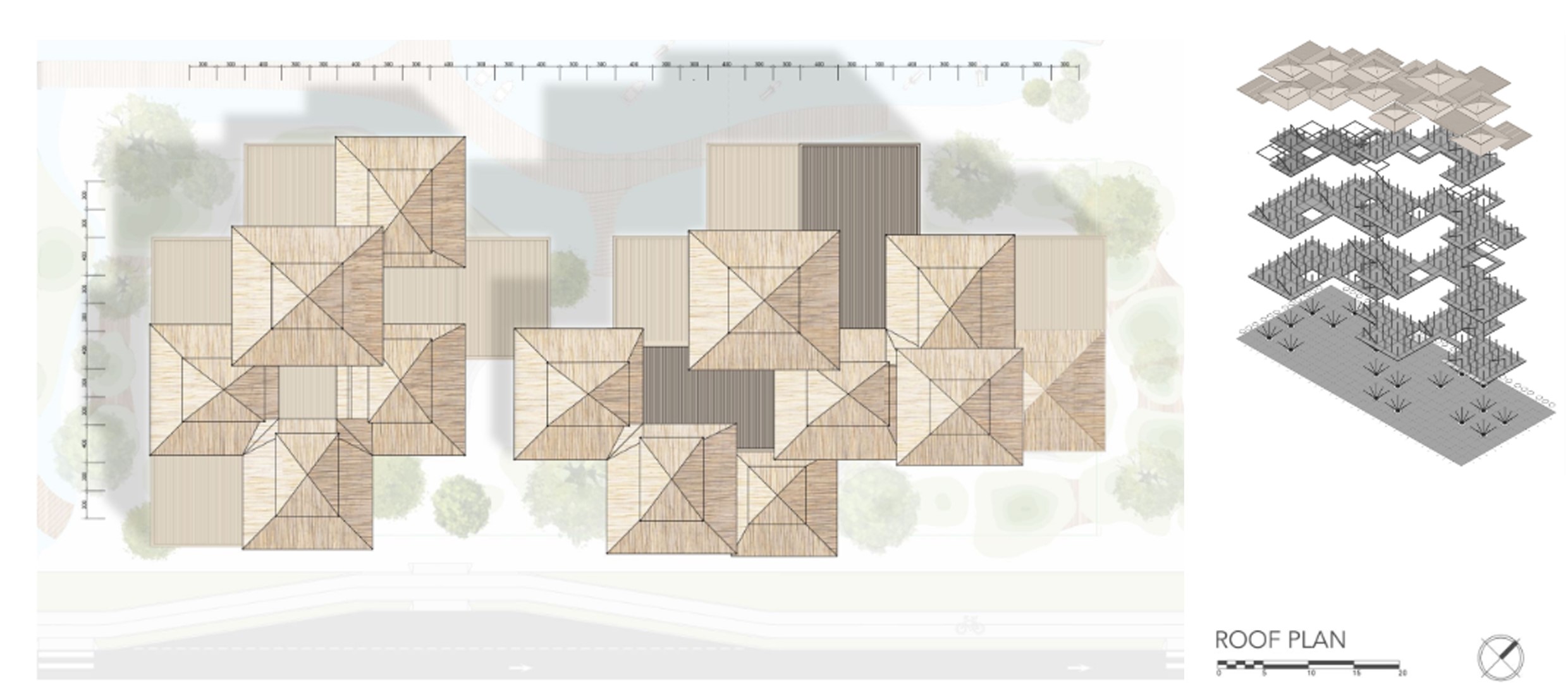
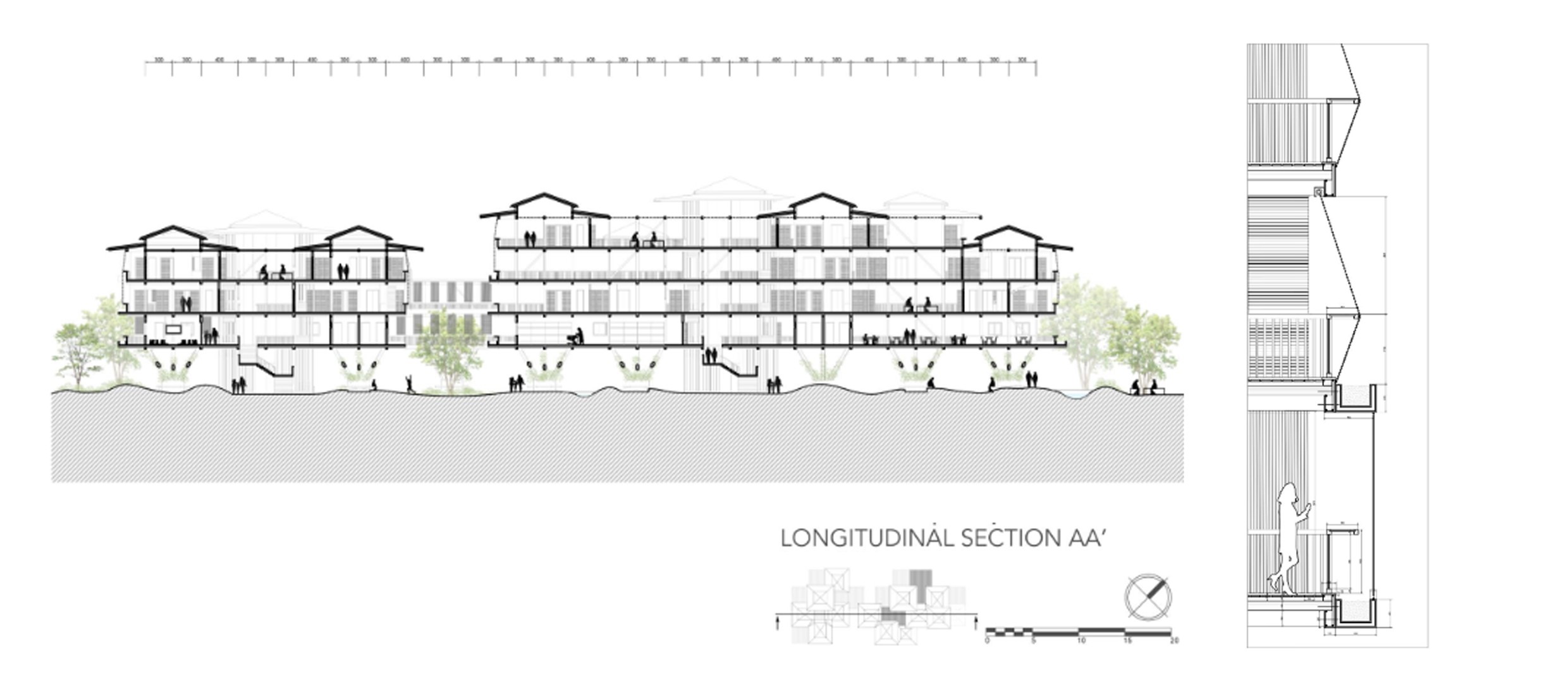
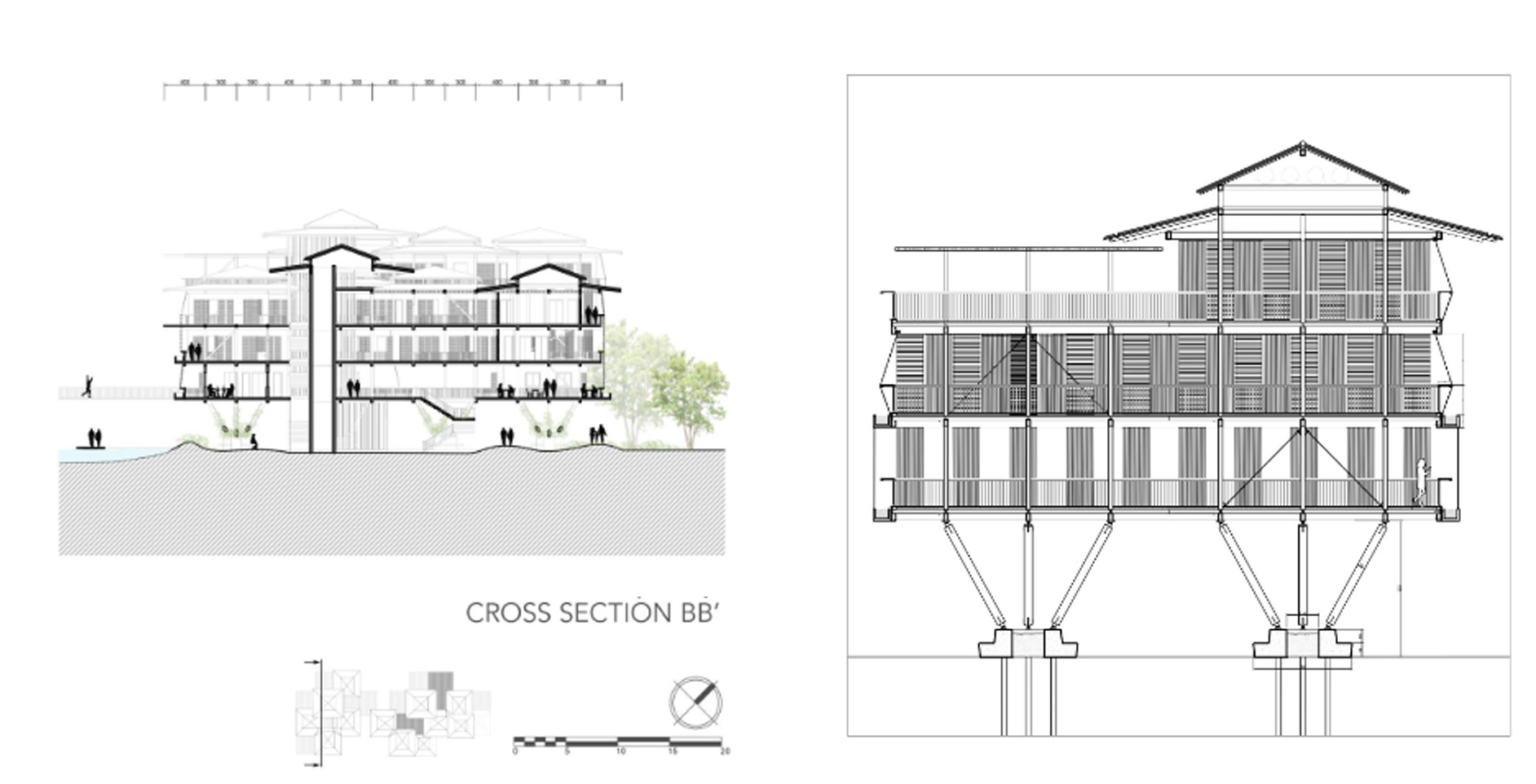
DESIGN FUNCTIONALITY | A Concise understanding of The Nest
THERMODYNAMIC FABRICATIONS:
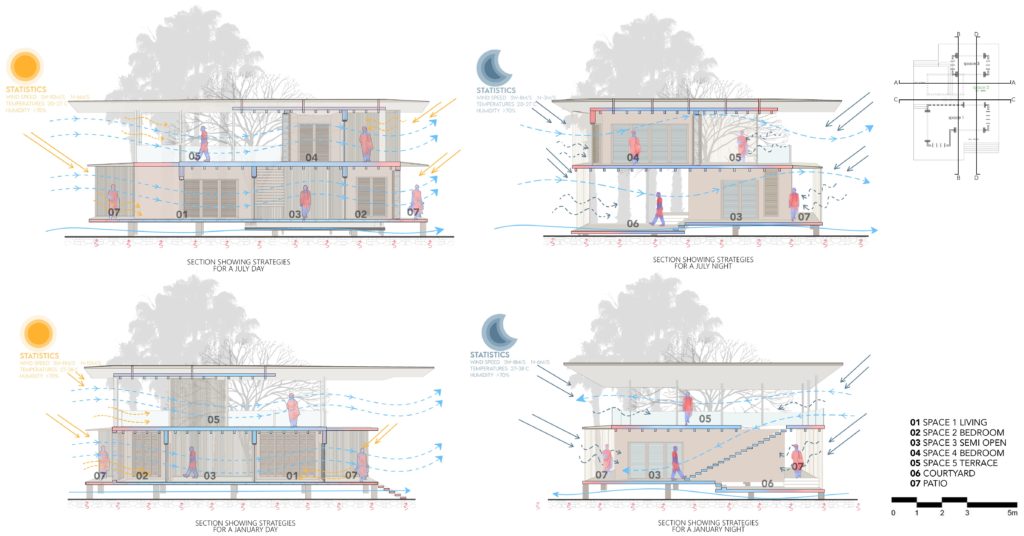
With Thermodynamic Fabrications, the goa was to tackle the temperature and the ventilation in the design. Hence, a double facade was implemented one that kept the heat out and allowed for the wind to enter the spaces. The large overhangs allowed for additional shading. The stilts prevent the heat of the ground from entering the space.
ECOSYSTEMIC STRUCTURES:
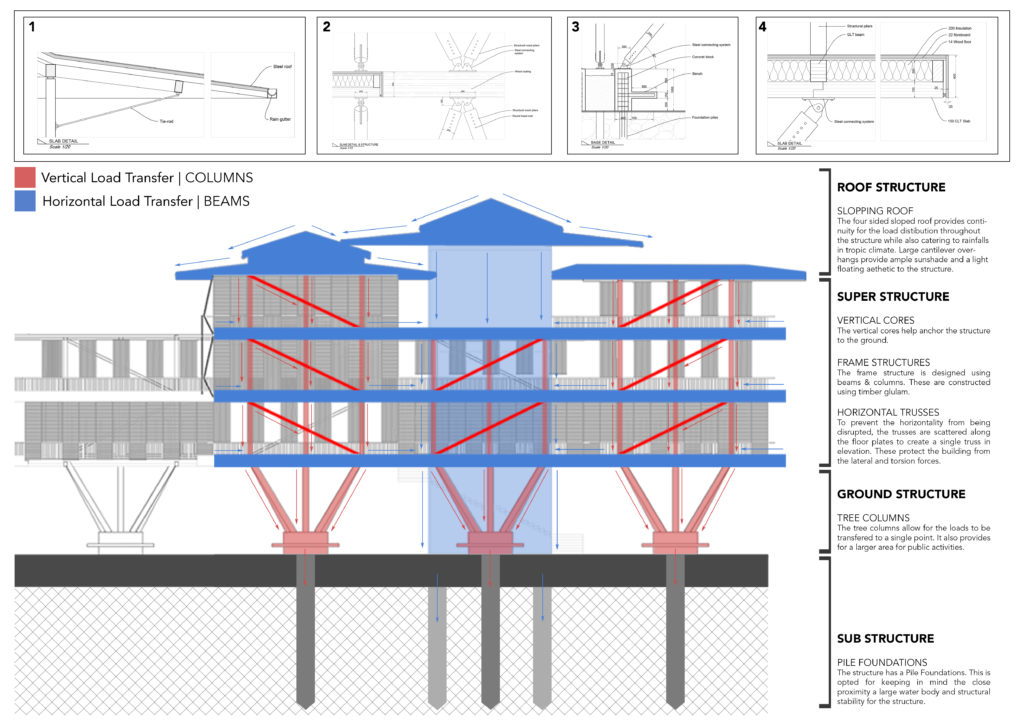
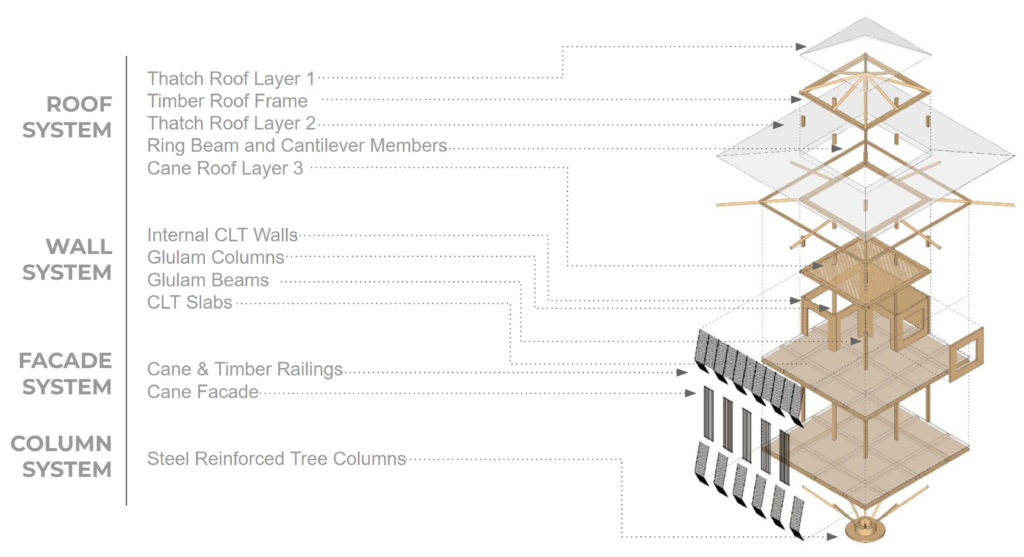
The structural system chosen is one that not only considers the most suitable system for load transfer but also one that allows for the best use of space and interaction between space, structure and user.
METABOLIC BUILDING SYSTEMS | ENERGY:
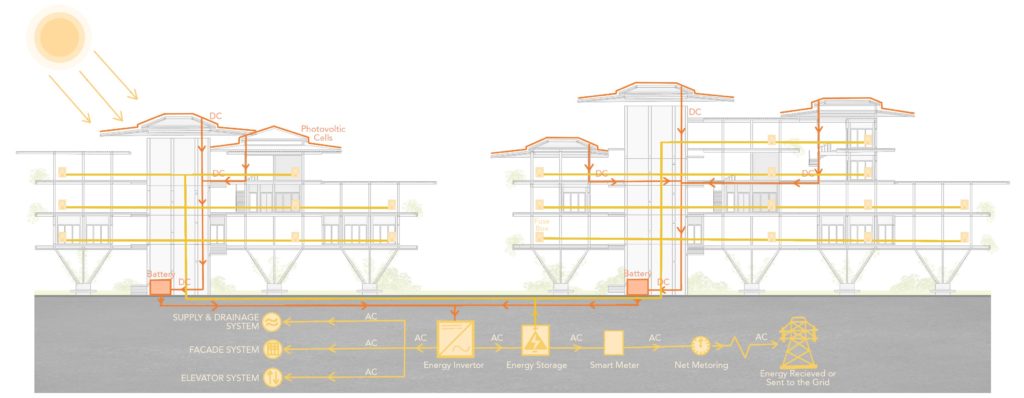
The energy system chosen allows for the entire structure to be self sufficient while also allowing for the grid to provide energy incase of an emergency. Additionally, all excess solar energy harvested is then sent to the grid to be net metered.
METABOLIC BUILDING SYSTEMS | WATER:
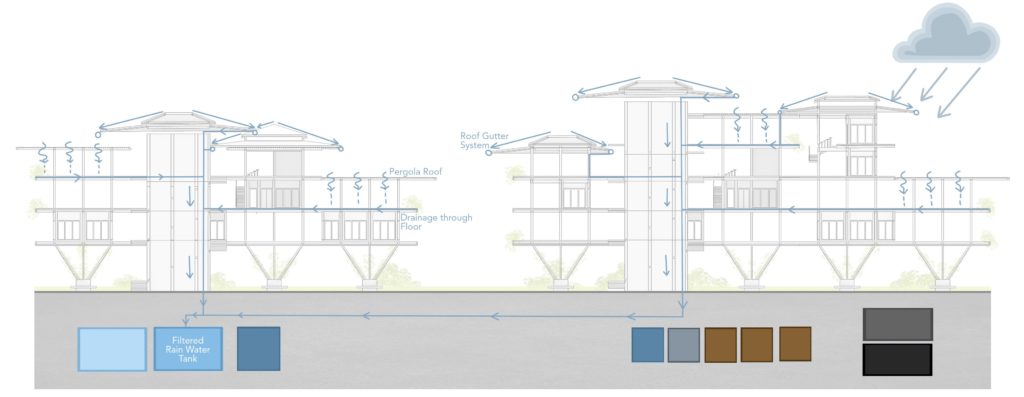


The water systems work in harmony allowing for minimal water wastage and maximum recyclability. the Rainwater that is harvested is also stored in the tank and released to the ground and the lagoon during the dry seasons to help replenish and maintain the environment.
RESILIENT ENVELOPES:
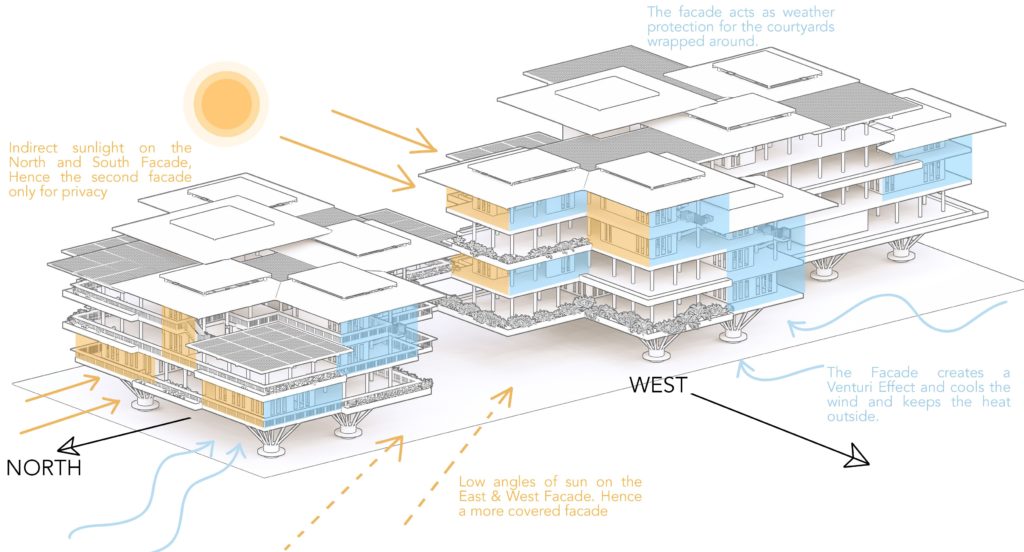
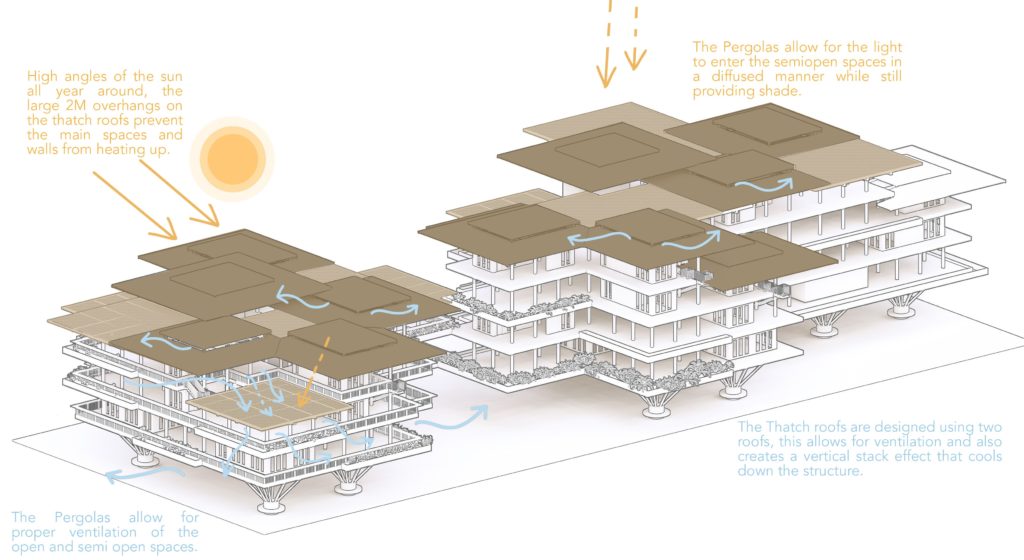
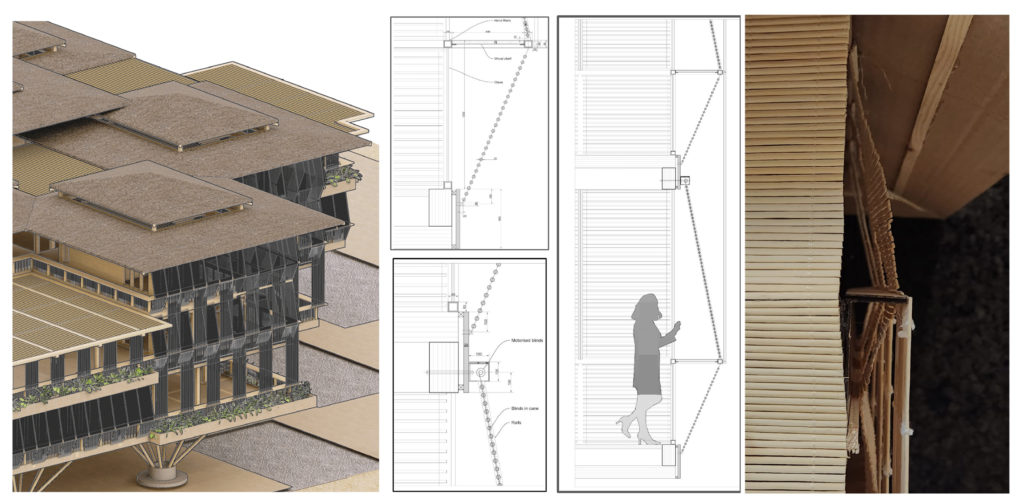
URBAN INTERVENTIONS | The Transversal City:
In the urban setting, the plot is set along a water body on one side, with pedestrian streets on three sides and a vehicular street on one side. Instead of the design being an isolated element inside the plot, the idea was to open it up for public interaction and enhancing the connection with nature. This is achieved through undulating landscape in the ground floor that ties up with the tree columns, infused with greenery to provide a natural walkway and leisure space for the residents of the building as well as the surrounding community. Different contours in the topography creates berms and pits at points that more than just a landscape element, also acts as an absorption and recharge pit for stormwater. Since the plot is in a less denser and more natural part of the city, that gradient into nature is seen created in the design. Organic pathways through green landscape and boardwalk along the water lets a leisure walk through the space.
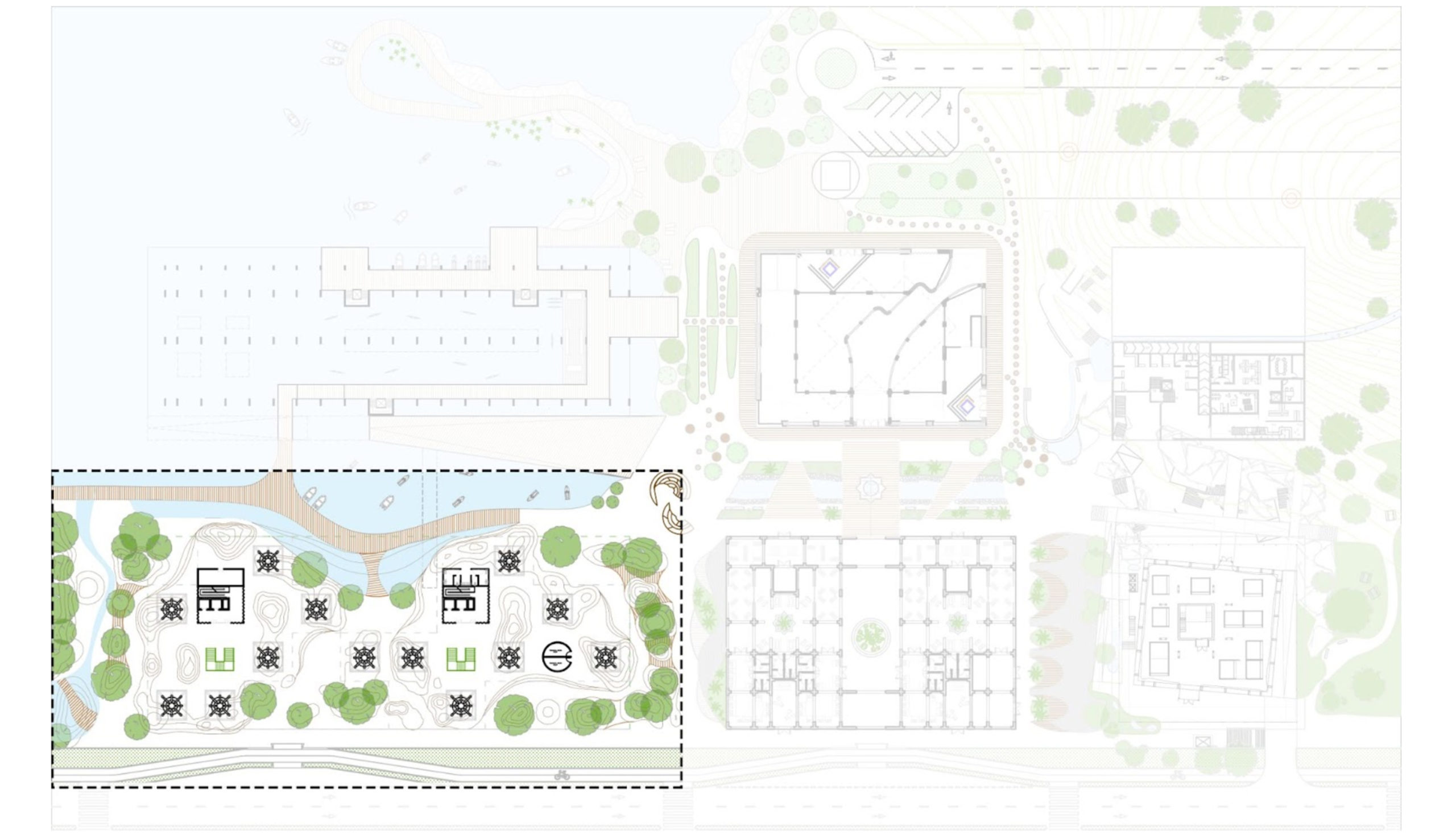

The activities and interactions designed in the adjacent streets can be seen through the sections. According to the common agents and programs of the adjacent buildings, connections have been derived in different level. ON the north side, water connects the plot with the mediterranean plot. Here, connection is created through common boardwalks in the ground level and a bridge on the first floor level, connecting similar programs.
On the eastern side, the plot is connected with the desert plot, which is also the main commercial center of the city block. Here, to transition from commercial activity to natural space, a green buffer with organic flows and seating area is designed. This is also continuity of a green zone coming from the outskirts, continuing through the ground floor of our design and linked with green spaces on other streets trying to create a continuous line for biodiversity.
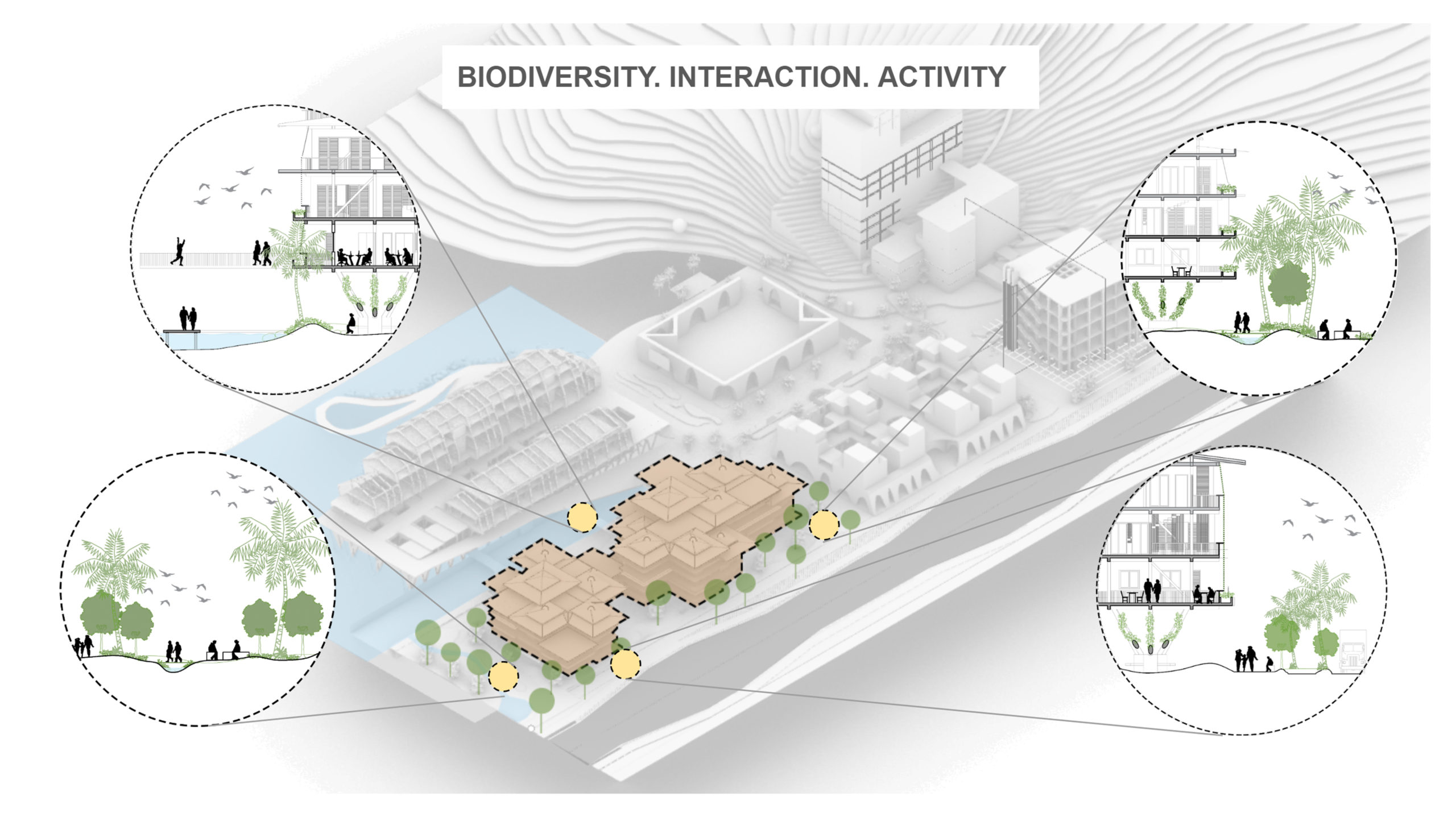

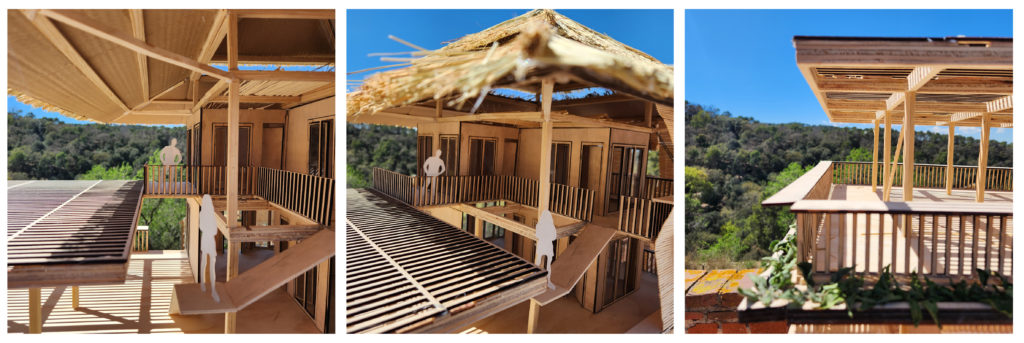
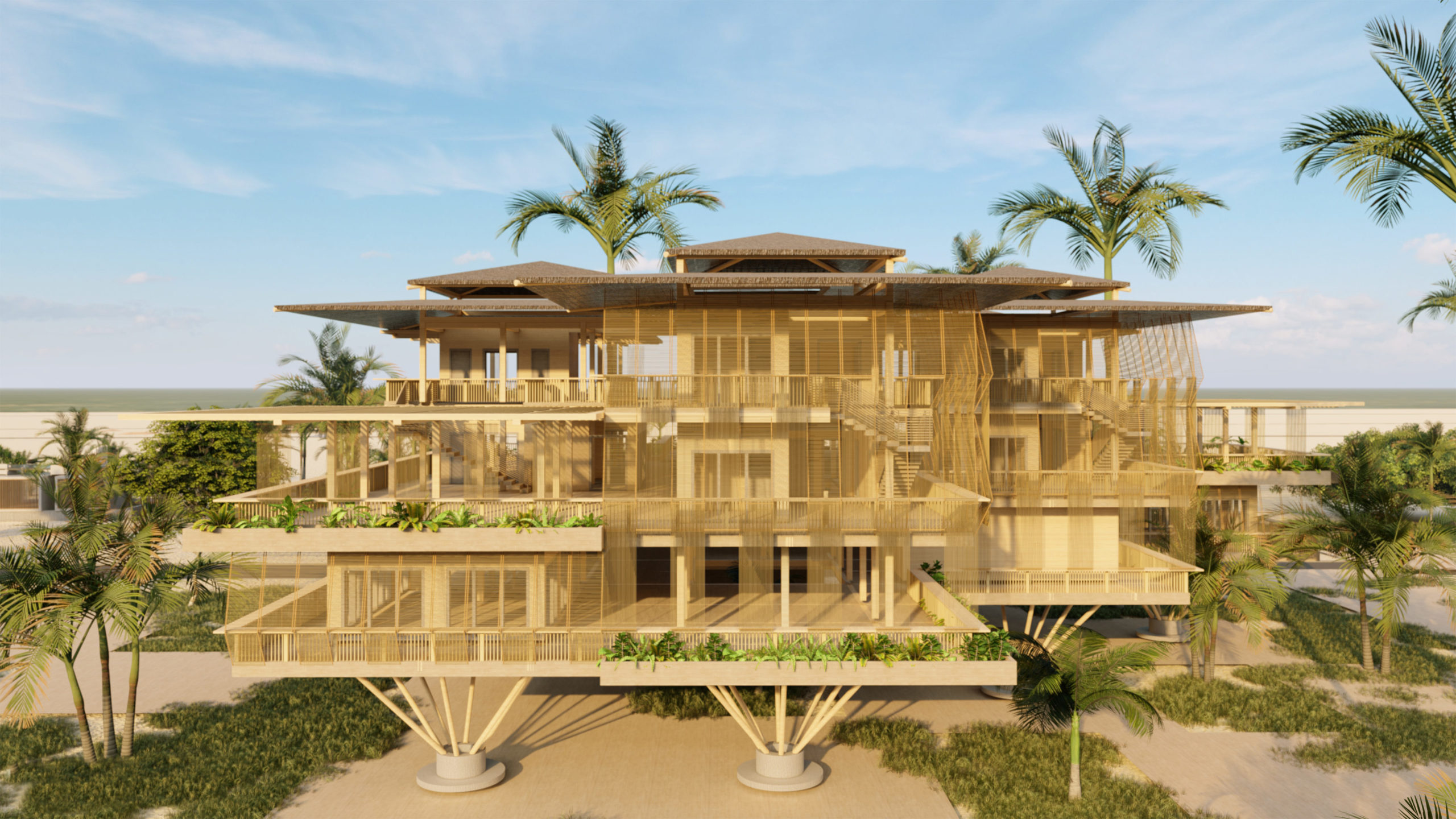
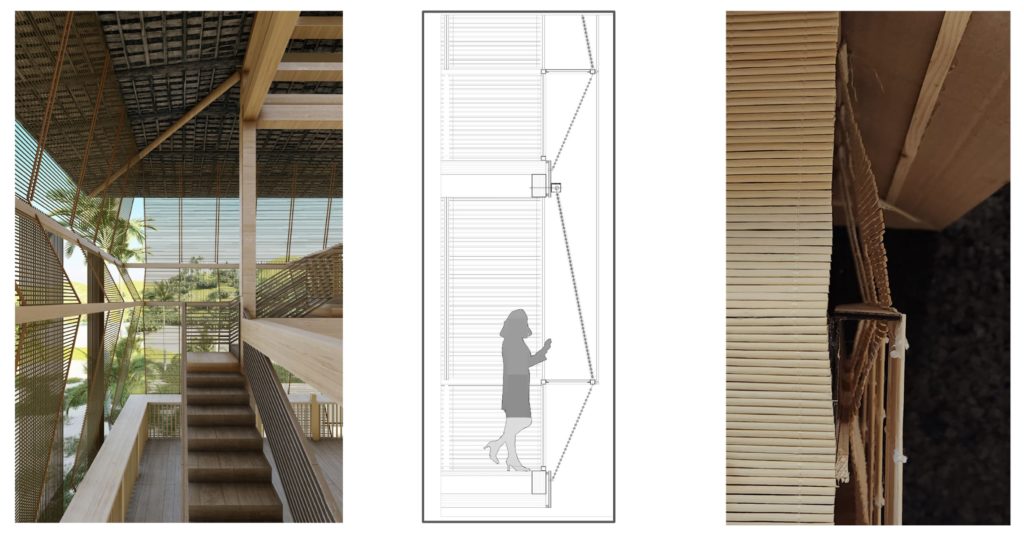

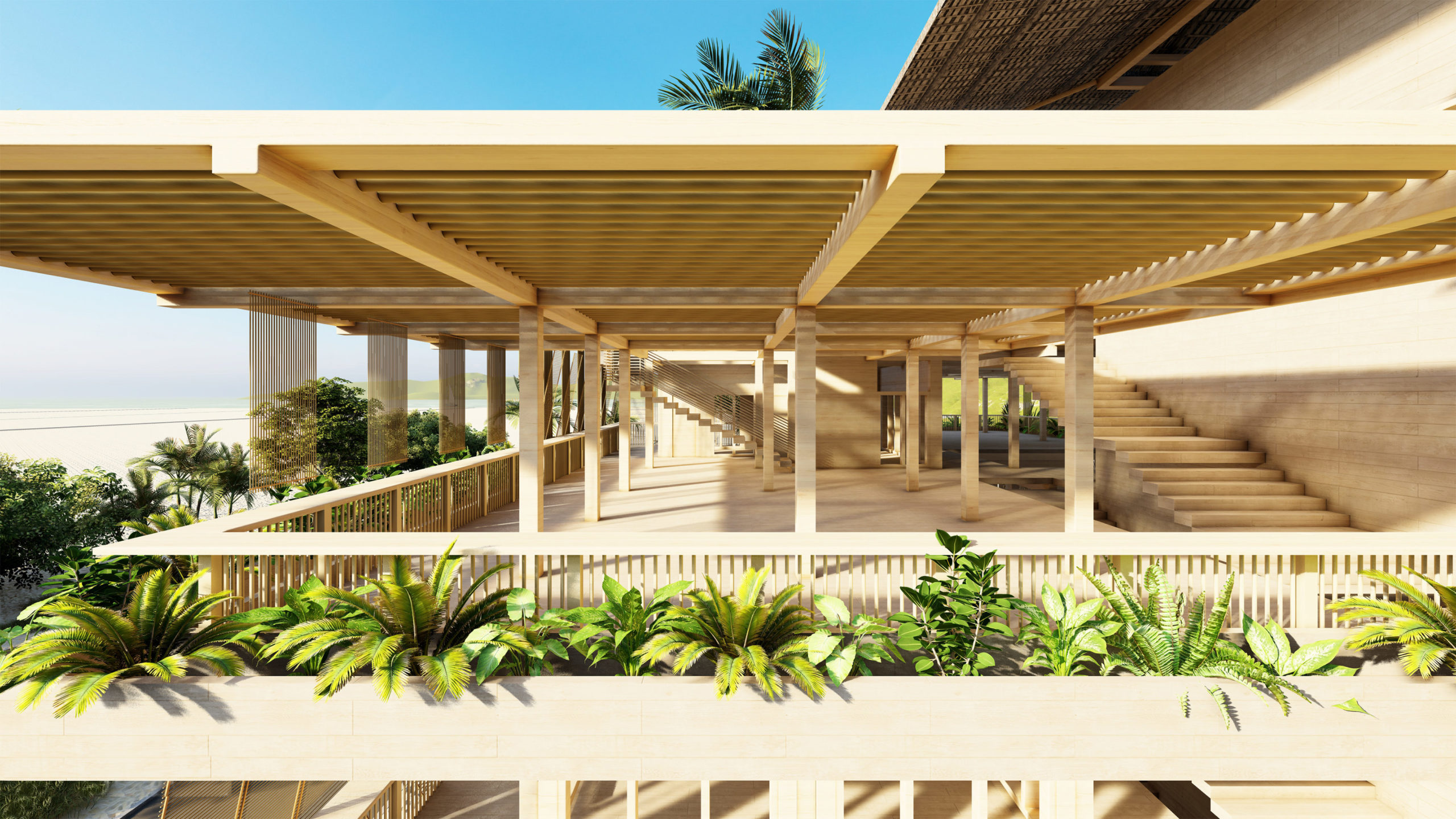
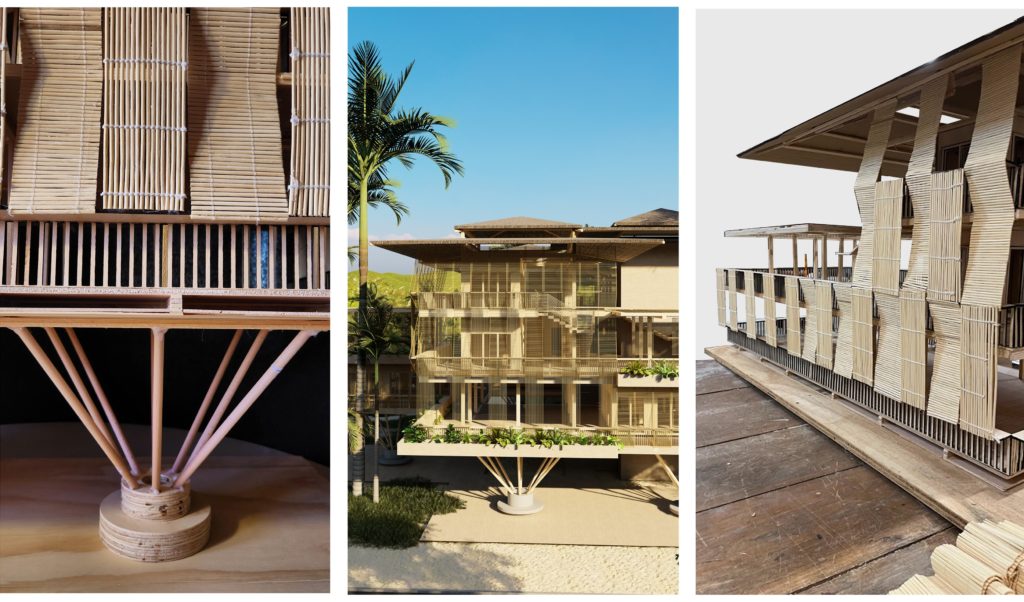

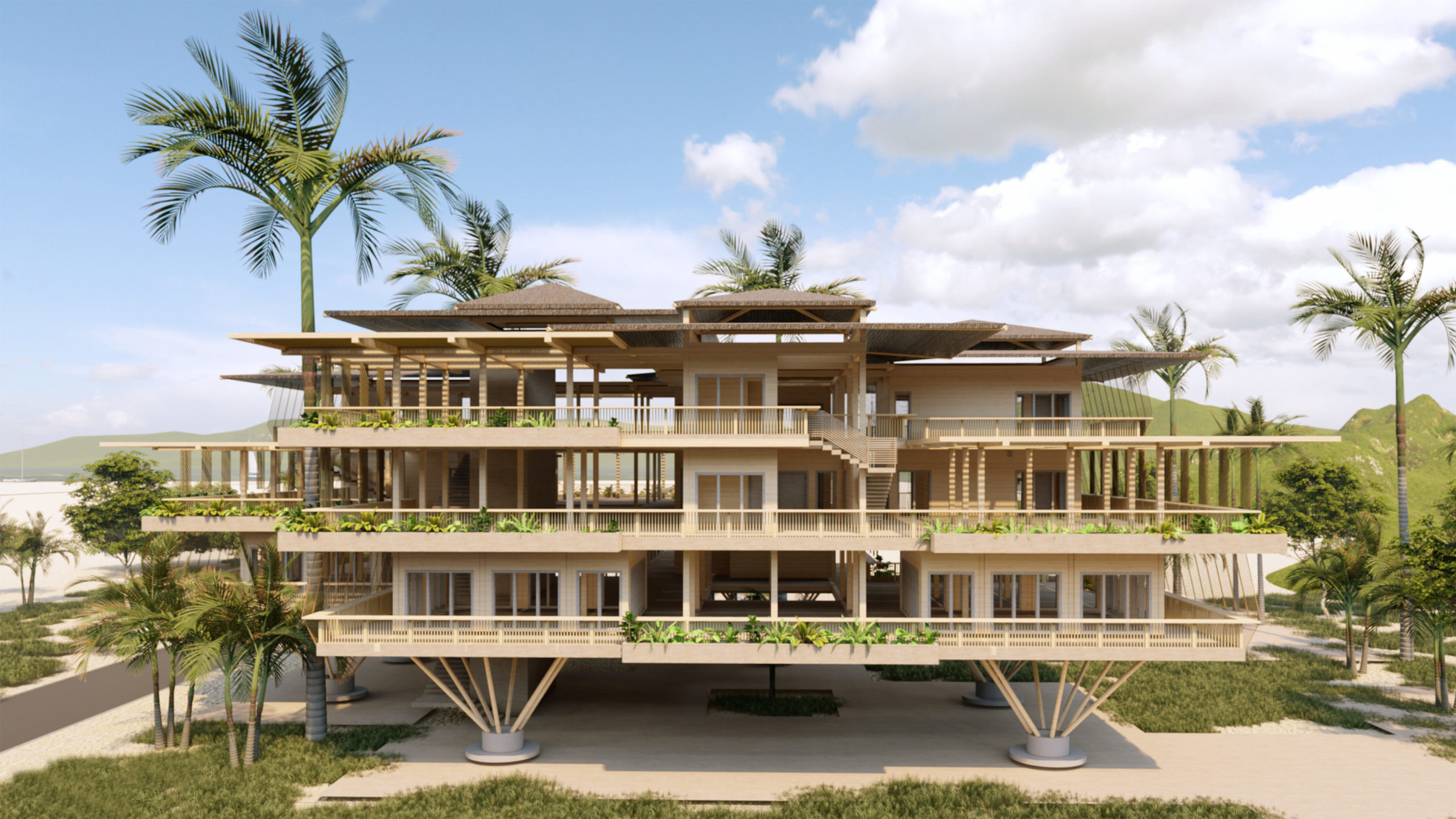
Kindly refer to the following blog posts for more details about The Nest :
– THERMODYNAMIC FABRICATIONS BLOG: https://blog.iaac.net/the-nest-thermodynamic-fabrications/
– ECOSYSTEMIC STRUCTURES BLOG: https://blog.iaac.net/the-nest-ecosystemic-structures/
– ADVANCED DIGITAL TOOLS BLOG: https://blog.iaac.net/the-nest-advanced-digital-tools/
– METABOLIC SYSTEMS | ENERGY BLOG: https://blog.iaac.net/the-nest-metabolic-systems-energy/
– METABOLIC SYSTEMS | WATER BLOG: https://blog.iaac.net/the-nest-metabolic-systems-water/
– RESILIENT ENVELOPES BLOG: https://blog.iaac.net/the-nest-resilient-envelopes/

